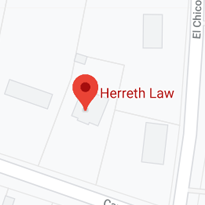Most people know that defendants are presumed innocent until proven guilty. The presumption of innocence is rather unique to American law. In many other parts of the world, defendants are presumed guilty until they prove their innocence.
However, not everyone knows how much evidence prosecutors must present to overcome the presumption of innocence. Additionally, before the case reaches trial, there are some procedural issues that involve proof of criminal activity.
At every stage of a criminal prosecution, Fort Worth criminal defense attorneys need not “prove” anything. They must simply challenge the state’s evidence. If the prosecutor’s evidence cannot withstand these challenges, the defendant is usually not guilty as a matter of law.
Reasonable Suspicion
According to 1968’s Terry v. Ohio, reasonable suspicion is specific, articulable facts which indicate criminal activity is afoot. Reasonable suspicion is the level of proof officers need to detain suspects.
In almost all cases, the reasonable suspicion is unrelated to the charged crime, because the defendant commits a traffic violation. Most people cannot drive more than a few blocks without speeding one or two miles per hour over the limit, rolling through a stop sign, not signalling before changing lanes, and so on.
The law goes back and forth regarding furtive gestures. These movements include things like nervous glances into the rearview mirror and seemingly shoving something under the seat. Currently, these gestures do not qualify as reasonable suspicion. Furtive movements are not facts.
Probable Cause
This standard of proof is a big step above reasonable suspicion. Probable cause is the amount of evidence that officers need to make an arrest.
DWIs are a good example of the difference between reasonable suspicion and probable cause. If a defendant smells of alcohol or has bloodshot eyes, that’s probably reasonable suspicion. If the defendant fails field sobriety tests, that’s sufficient cause. Physical symptoms, at best, only prove the defendant had been drinking. The field sobriety tests, however, are enough to establish probable intoxication.
If officers do not have probable cause, the arrest is invalid. If the arrest was invalid, the prosecution cannot move forward.
Beyond a Reasonable Doubt
This is the standard of proof at trial. For many years, Texas law defined reasonable doubt as “a doubt based on reason and common sense.” One court called this definition “useless” because it is like saying “‘A white horse is a horse that is white.’” So, judges intentionally do not define the phrase reasonable doubt when they instruct jurors.
Essentially, proof beyond a reasonable doubt means the evidence is so compelling that the prosecution’s conclusions are the only possible conclusions.
DWI-collision cases are a good example. Many times, no one actually saw the defendant driving the car. If there was no one else in the car, it’s reasonable to assume the defendant was driving. If there was more than one person in the car, that assumption is not reasonable.
In both pretrial and trial proceedings, the state has the burden of proof. For a free consultation with an experienced criminal defense attorney in Fort Worth, contact Herreth Law. We routinely handle matters in Tarrant County and nearby jurisdictions.

